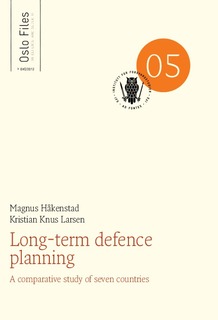Long-term defence planning: a comparative study of seven countries
Others
Permanent lenke
http://hdl.handle.net/11250/99805Utgivelsesdato
2012Metadata
Vis full innførselSamlinger
Sammendrag
This study compares the long-term defence planning systems of the Nordic countries Denmark, Sweden, Norway and Finland, as well as France, the United Kingdom and the Netherlands. Long-term defence planning is here understood as a process by which a given state arrives at a policy on the future development of their armed forces. It takes place at the interface between the political, military and civil service spheres. The study aims to identify the actors involved in long-term defence planning, and how the planning processes are carried out. The clearest finding is that long-term defence planning is conducted in very different ways in all the countries studied. There is a wide variety of actors and institutions who initiate, control and contribute to the long-term planning process. For instance, in some countries the ministry of defence is in control, while in others it plays a subordinate role. When it comes to how the planning is carried out, there are differences in frequency, timing and outlook, as well as how methodical and structured the different systems are. Moreover, there is reason to believe that these differences are rooted in the constitutional traditions and long-established public management practices of each country, and therefore difficult to change. When considering future international cooperation on long-term defence planning, these differences should be kept in mind.
